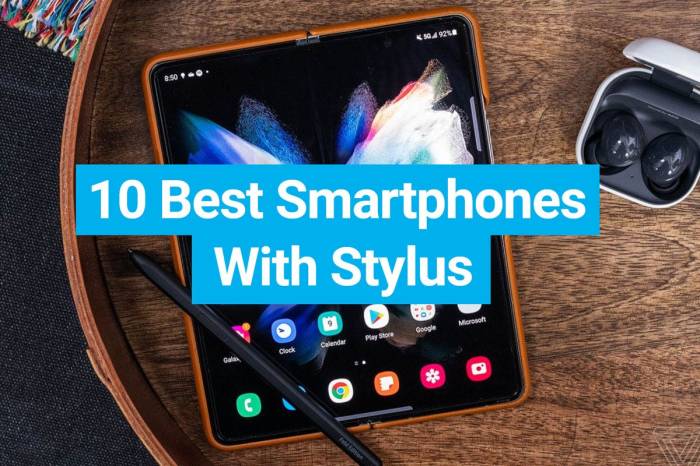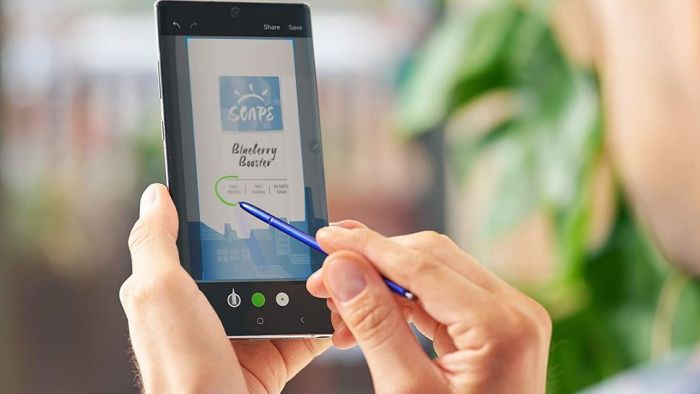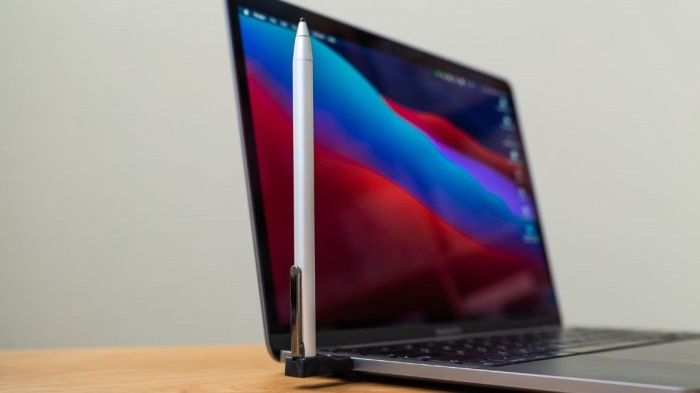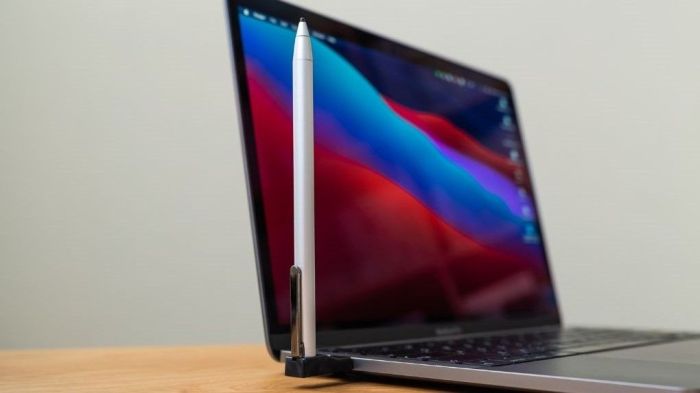Best stylus phone for productivity and multitasking: The modern professional demands seamless workflow, and the right device can make all the difference. This exploration delves into the features, software, and considerations crucial for selecting a stylus phone that optimizes productivity and effortless multitasking. We’ll examine the impact of screen size, battery life, and ergonomic design on the overall user experience, comparing leading operating systems and highlighting key software enhancements that elevate the stylus from a simple accessory to a powerful productivity tool. Through case studies and future trend analysis, we aim to equip you with the knowledge to make an informed decision.
From note-taking and sketching to managing multiple applications simultaneously, a stylus phone offers a unique blend of mobility and precision. This guide will navigate you through the intricacies of choosing the ideal device, considering factors like operating system compatibility, stylus features, screen resolution, and ergonomic comfort. We’ll explore how different features contribute to enhanced workflow, highlighting the advantages and disadvantages of various options to ensure you find the perfect fit for your individual needs and professional demands.
Defining “Productivity and Multitasking” in the Stylus Phone Context

Productivity and multitasking on a stylus-enabled phone go beyond the capabilities of a standard touchscreen device. It introduces a new layer of precision and efficiency, particularly for tasks demanding detailed input and manipulation. This enhanced functionality allows users to accomplish more in less time, streamlining workflows and improving overall efficiency.
The core of stylus-enhanced productivity and multitasking lies in the ability to perform actions with greater accuracy and nuance. This is particularly beneficial for note-taking, sketching, editing documents, and navigating complex interfaces. A stylus allows for more natural handwriting recognition, precise image editing, and smoother navigation than finger-based interactions. Effective support for these activities requires specific hardware and software features.
Key Features Supporting Stylus-Based Productivity and Multitasking
A phone designed for optimal stylus productivity and multitasking needs several key features. Firstly, accurate and responsive pressure sensitivity is crucial for nuanced tasks like sketching and handwriting. The stylus itself should be comfortable to hold and use for extended periods. Secondly, robust handwriting recognition software is essential for seamless note-taking and converting handwritten text to digital format. Thirdly, the phone should seamlessly integrate stylus functionality with existing apps, offering shortcuts and specialized tools optimized for stylus input. Finally, a high-resolution display is necessary for detailed work and comfortable viewing. These features, working in concert, significantly enhance the user experience and unlock the true potential of a stylus phone for productivity.
Stylus Features and Their Impact on Productivity and Multitasking
The following table compares how different stylus features impact productivity and multitasking. Note that the impact can vary based on individual user needs and preferences, as well as the specific applications used.
| Feature | Impact on Productivity | Impact on Multitasking | Example Phone |
|---|---|---|---|
| Pressure Sensitivity | Enables nuanced sketching and drawing, leading to more efficient creative work and detailed note-taking. | Allows for smoother transitions between apps while maintaining precision in tasks. | Samsung Galaxy S23 Ultra |
| Palm Rejection | Reduces accidental inputs while writing or drawing, improving accuracy and workflow. | Allows for comfortable multitasking without constantly worrying about accidental touches. | Apple iPad Pro (although a tablet, its features are relevant) |
| Tilt Sensitivity | Offers greater control over line weight and shading in drawing and sketching apps. | Improves the speed and efficiency of switching between different creative tasks. | Samsung Galaxy Note 20 Ultra |
| Low Latency | Minimizes the delay between stylus input and on-screen response, resulting in a more natural and responsive writing experience. | Facilitates seamless switching between applications and tasks without noticeable lag. | Huawei MatePad Pro |
| Handwriting-to-Text Conversion | Transforms handwritten notes into editable digital text, significantly improving efficiency in note-taking and document creation. | Allows for quick note-taking during meetings or lectures, which can later be seamlessly integrated into other tasks. | Various Android phones with Google’s handwriting recognition |
Software Optimization for Stylus-Based Productivity

The effectiveness of a stylus phone hinges not only on the hardware but critically on the software’s ability to seamlessly integrate stylus input into the user experience. Optimized software unlocks the true potential of the stylus, transforming it from a simple input method into a powerful productivity tool. Without proper software support, the stylus remains underutilized, failing to deliver the enhanced efficiency it promises.
Software optimization for stylus functionality ensures that applications are designed to accurately interpret stylus strokes, pressure sensitivity, and tilt, providing a natural and intuitive writing and drawing experience. This is crucial for maximizing productivity and multitasking. The responsiveness of the software directly impacts the user’s workflow, determining the smoothness of note-taking, sketching, or any other stylus-based task. Lagging or inaccurate responses can severely hinder productivity.
Key Software Features Enhancing Stylus Productivity
Several key software features significantly enhance the productivity and multitasking capabilities of a stylus phone. These features go beyond basic touch input, providing advanced functionalities that streamline workflows and improve the overall user experience. The integration of these features directly correlates to improved efficiency in various tasks.
- Palm Rejection: This feature prevents accidental input from the user’s palm resting on the screen while writing or drawing. This is crucial for comfortable and accurate stylus usage, particularly during extended periods of note-taking or sketching. Without palm rejection, unintentional marks and strokes can disrupt the workflow, leading to frustration and reduced productivity.
- Pressure Sensitivity and Tilt Recognition: Software support for pressure sensitivity allows for varying line thickness and shading in drawings and handwriting, mimicking the nuances of traditional pen and paper. Similarly, tilt recognition enables users to create different line styles and effects. This level of control significantly enhances the creative potential of the stylus and improves the overall quality of notes and drawings, making them more expressive and detailed.
- Integrated Note-Taking and Annotation Applications: Many stylus-optimized phones include sophisticated note-taking apps that seamlessly integrate with other applications. These apps often support handwriting-to-text conversion, allowing for quick digitization of notes. Furthermore, annotation features allow users to directly markup PDFs, documents, and images, significantly improving the efficiency of reviewing and editing digital content. The ability to seamlessly switch between note-taking, document review, and other tasks without interrupting the workflow is a significant advantage for multitasking.
Illustrative Examples of Stylus Phone Use Cases

Stylus phones offer a unique blend of precision and convenience, significantly enhancing productivity and multitasking capabilities beyond what’s possible with touchscreen-only devices. The following examples highlight how a stylus transforms everyday tasks into efficient and streamlined workflows.
The precision and responsiveness of a stylus allow for more nuanced interactions with the phone’s operating system and applications, leading to increased efficiency and a more natural user experience. This is particularly beneficial for tasks requiring detailed input or intricate manipulation.
Note-Taking and Sketching During Meetings
Imagine attending a crucial business meeting. Instead of frantically typing notes on a keyboard or struggling to capture key ideas on a small touchscreen, you use your stylus to quickly jot down notes directly onto a digital notepad application. The stylus’s precision allows for detailed diagrams and sketches to illustrate concepts, supplementing your text notes. You can later easily organize and search these notes, unlike handwritten ones.
- User Actions: Quickly scribble notes, draw diagrams, and highlight key phrases directly on the screen using the stylus.
- Tools Used: A note-taking app with handwriting recognition and shape recognition features, and a stylus with pressure sensitivity.
- Benefits Achieved: Comprehensive and organized meeting notes that are easily searchable and shareable, improved comprehension through visual aids, and reduced time spent on note transcription.
Form Filling and Document Annotation
Filling out complex forms or annotating documents becomes significantly easier with a stylus. The precision of the stylus eliminates the frustration of inaccurate taps and allows for precise filling of even the smallest form fields. Document annotation is equally simplified, allowing for precise highlighting, underlining, and freehand notes.
- User Actions: Precisely fill out digital forms, highlight important text passages, and add handwritten comments directly onto PDF documents.
- Tools Used: A PDF reader app with annotation tools, and a stylus with good palm rejection.
- Benefits Achieved: Reduced time spent on form completion, improved accuracy in data entry, and efficient document review and collaboration.
Photo Editing and Graphic Design
For users involved in photo editing or graphic design, a stylus provides a level of control and precision unmatched by finger input. Fine details can be adjusted with ease, and intricate designs can be created directly on the phone’s screen.
- User Actions: Precisely retouch images, create detailed illustrations, and manipulate vector graphics using stylus-enabled design applications.
- Tools Used: A professional-grade photo editing app or graphic design software optimized for stylus input, and a stylus with pressure sensitivity and tilt recognition.
- Benefits Achieved: Enhanced control over image editing and graphic design, faster workflow, and higher-quality results.
Digital Art Creation and Illustration
Creating digital art on a stylus phone allows artists to sketch, paint, and illustrate on the go. The pressure sensitivity of the stylus translates to varying line weights and brush strokes, resulting in expressive and detailed artwork.
- User Actions: Sketch, paint, and illustrate using various digital brushes and tools, mimicking traditional art techniques.
- Tools Used: A digital art app with a wide range of brushes and tools, and a stylus with pressure sensitivity and tilt recognition.
- Benefits Achieved: Increased creative freedom, portability for on-the-go artwork creation, and the ability to easily share and collaborate on projects.
Medical Professionals Using Electronic Health Records (EHR), Best stylus phone for productivity and multitasking
In the medical field, a stylus can significantly enhance the efficiency of accessing and updating patient records. Physicians can quickly make notes, sign documents, and navigate EHR systems with greater precision and speed.
- User Actions: Quickly annotate patient charts, sign electronic prescriptions, and navigate EHR interfaces with greater precision.
- Tools Used: A stylus-optimized EHR application, and a stylus with accurate input and palm rejection.
- Benefits Achieved: Improved workflow efficiency, reduced errors in data entry, and enhanced patient care through faster access to information.
Ultimately, the best stylus phone for productivity and multitasking is the one that seamlessly integrates into your workflow, enhancing efficiency and minimizing distractions. By carefully considering the factors discussed—operating system, stylus features, screen size, battery life, ergonomics, and price—you can confidently select a device that empowers you to achieve peak performance. The right tool can significantly improve your daily productivity, transforming how you work and interact with your digital world. Remember to prioritize features that directly address your specific needs and workflow preferences for optimal results.
Common Queries: Best Stylus Phone For Productivity And Multitasking
What is the average lifespan of a stylus?
Stylus lifespan varies depending on usage and quality. High-quality styluses can last for several years with regular use, while cheaper options may require replacement sooner.
Are all stylus phones compatible with all styluses?
No, compatibility varies. Some phones are designed to work only with their specific branded styluses, while others support various passive or active styluses. Check the phone’s specifications for compatibility information.
Can I use a stylus phone for graphic design work?
Yes, many stylus phones offer sufficient precision and pressure sensitivity for basic to intermediate graphic design tasks. However, for professional-level work, a dedicated graphics tablet might be more suitable.
How do I clean my stylus?
Gently wipe the stylus tip with a soft, slightly damp cloth. Avoid using harsh chemicals or abrasive materials.
Examine how long term cost savings of using esim instead of physical sim can boost performance in your area.

